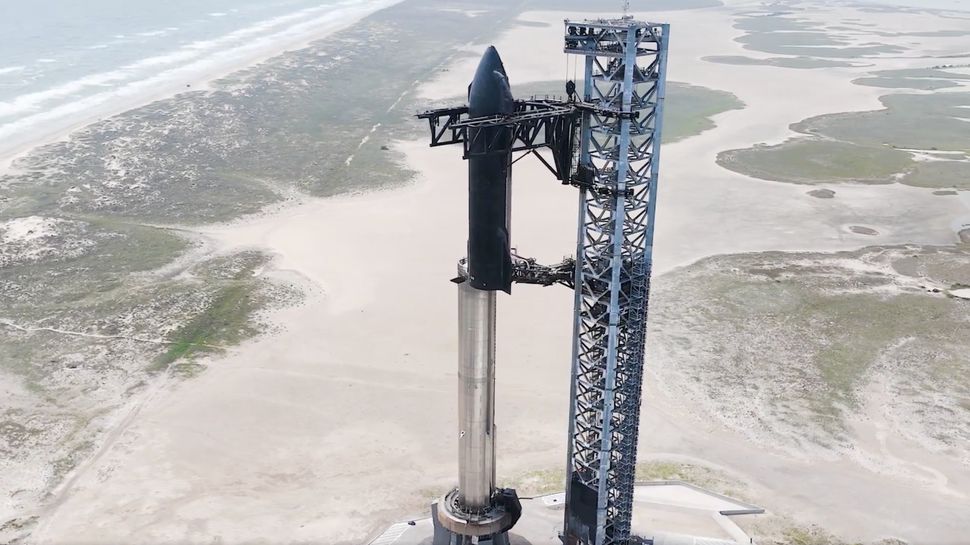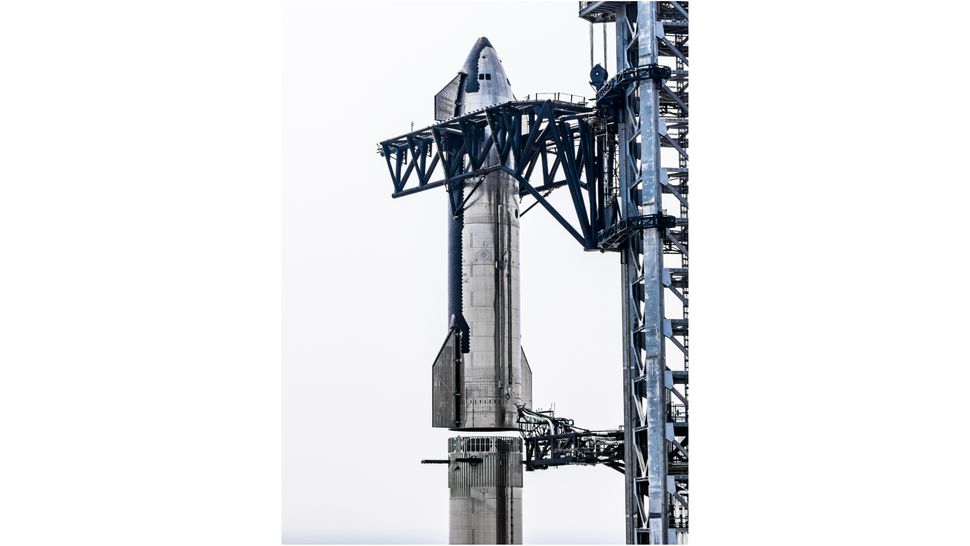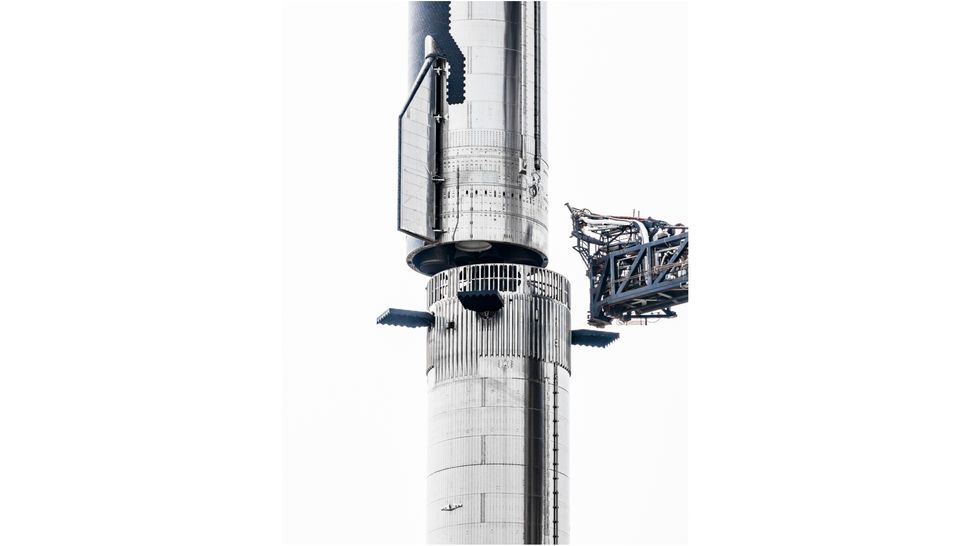
SpaceX stacks Starship megarocket ahead of 4th test flight (video, photos) (Image Credit: Space.com)
SpaceX continues gearing up for the fourth test flight of its Starship megarocket, which could be just around the corner.
Technicians recently stacked the Starship rocket that will conduct the flight, placing its “Ship” upper stage atop its “Super Heavy” first-stage booster on the orbital launch mount at SpaceX‘s Starbase site in South Texas. The company posted a video and photos of this operation, which was performed using the “chopstick” arms of Starbase’s giant launch tower, on X yesterday (May 15).
“Full stack of Flight 4 Starship,” SpaceX wrote in the post.
Related: Relive SpaceX Starship’s 3rd flight test in breathtaking photos

Starship stacking is a dramatic and impressive sight. There’s a striking juxtaposition of mechanical and natural beauty, for example, as a gleaming silver rocket rises amid shrub-studded seaside dunes. And that 400-foot-tall (122 meters) rocket is bigger and more powerful than any other launch vehicle humanity has ever built.
The stacking follows earlier testing performed separately with Flight 4’s Super Heavy and Ship. SpaceX has already ignited the Raptor engines of both vehicles on the launch mount, in common and brief prelaunch trials known as static fires.

Starship’s three test flights occurred in April 2023, November 2023 and March 14 of this year.
The giant rocket’s performance has improved on each successive liftoff. The debut, for instance, ended after just four minutes when Starship’s two stages failed to separate. Starship doubled that flight time on the second launch and also achieved stage separation. Flight number three lasted nearly 50 minutes, ending when Ship broke apart upon reentry to Earth’s atmosphere.

Flight number four could lift off in just three to five weeks, SpaceX founder and CEO Elon Musk said recently.
There are still some logistical hurdles to clear, however: SpaceX applied for a Starship launch license modification from the U.S. Federal Aviation Administration, which is overseeing an investigation into what happened on the March 14 mission. That modification has apparently not been approved yet.








